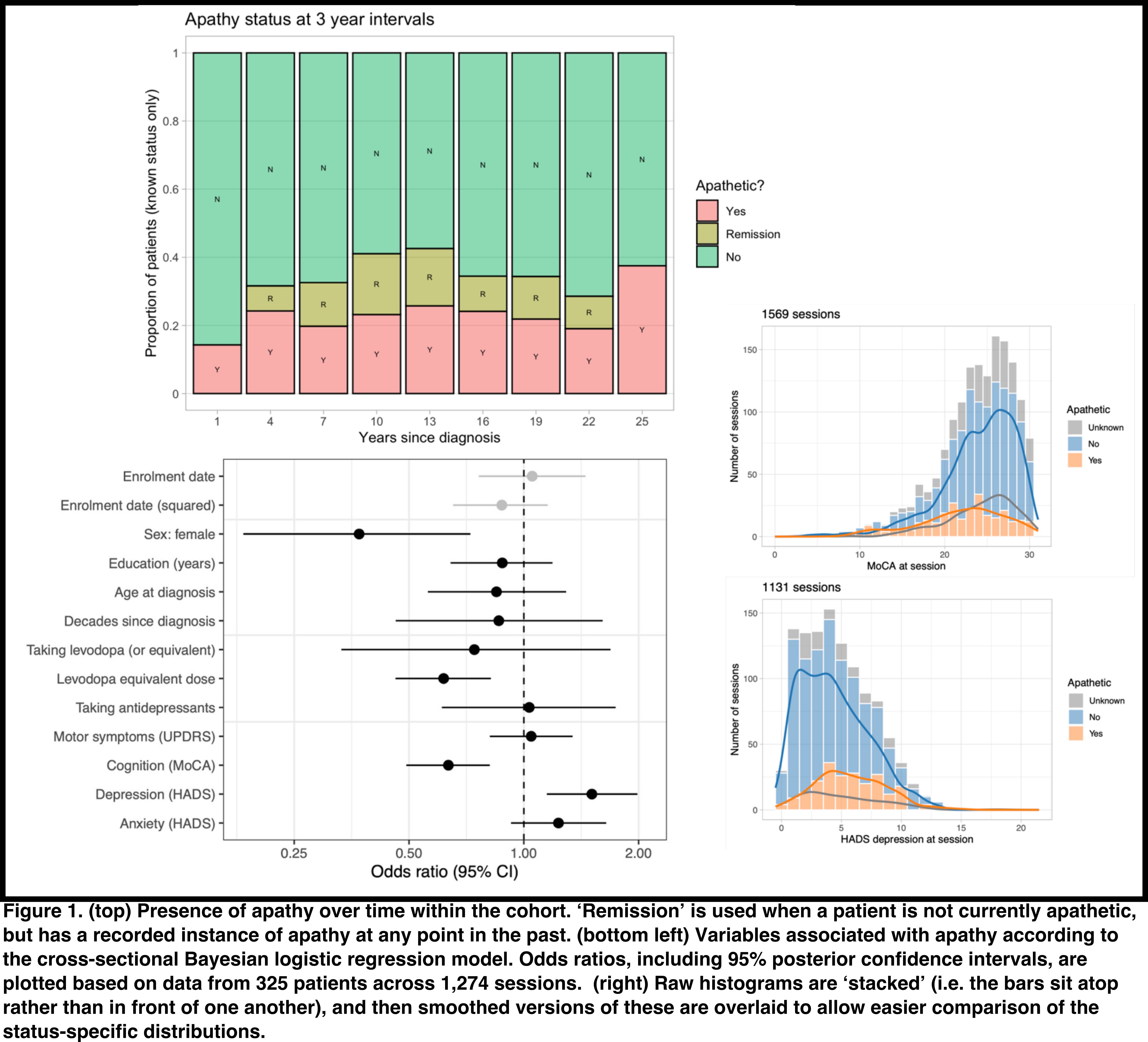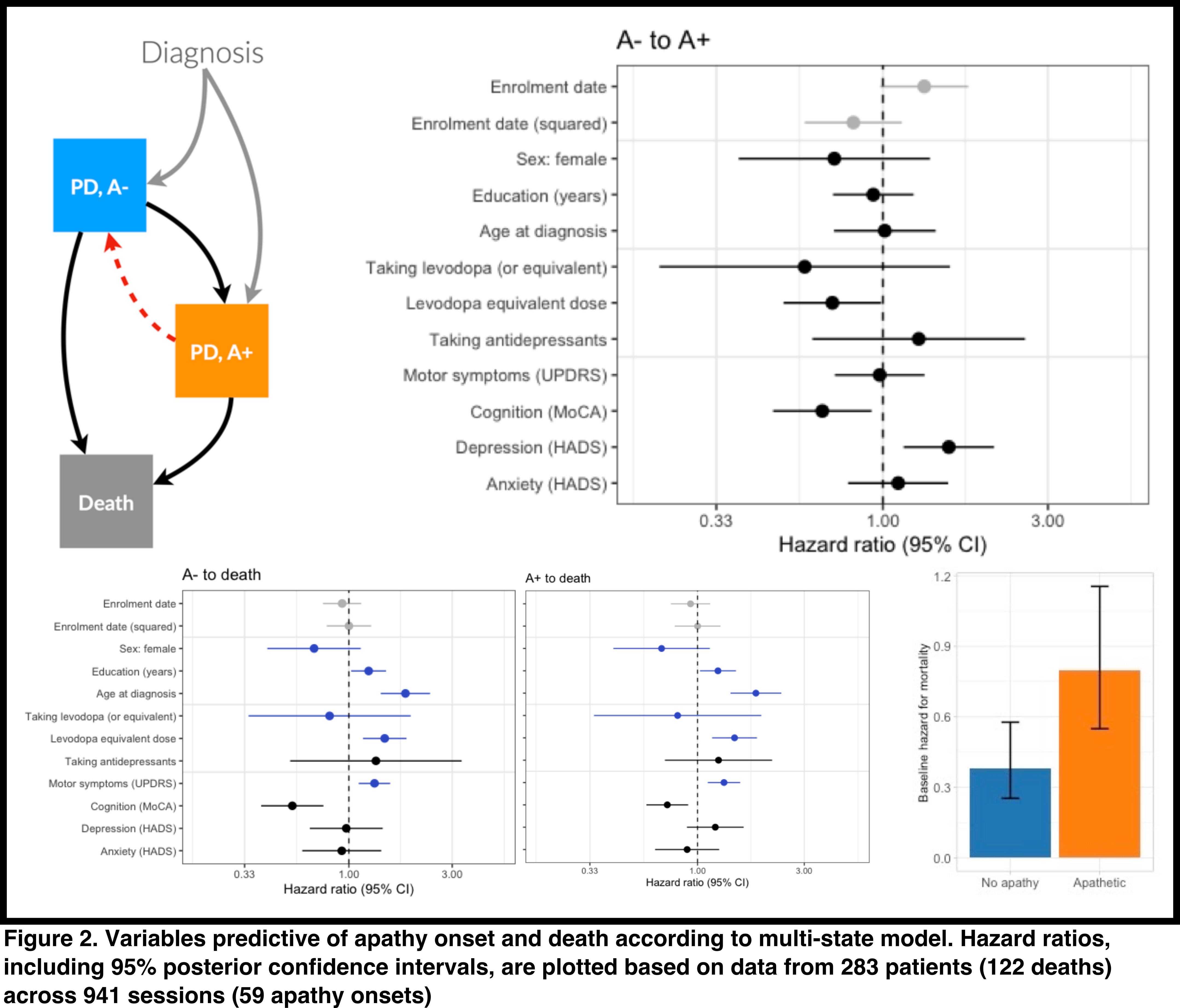Category: Parkinson's Disease: Non-Motor Symptoms
Objective: To determine how apathy varies across different disease stages of Parkinson’s disease (PD) and the longitudinal predictors of its development, using a large PD longitudinal cohort.
Background: Apathy is a common non-motor feature of PD, and consistently associated with poor quality of life. However, despite its importance most epidemiological studies have been cross-sectional and little is known about the natural history of apathy across the course PD, nor the cognitive and behavioural factors that predict its development.
Method: The New Zealand Parkinson’s Progression Programme (NZP3) is a longitudinal convenience study of PD that has been running in Christchurch, NZ since 2007. We used data from 354 patients, across 1591 sessions, including extensive neuropsychological, neuropsychiatric and PD-specific assessments. Apathy was assessed using the Neuropsychiatric inventory. We analysed this real-world dataset using complementary modelling techniques. Cross-sectional analyses were conducted using Bayesian logistic regression (brms package in R). Predictive analyses, identifying risk factors that predate the initial onset of apathy whilst also accounting for the competing risk of death were performed using a multi-state model (msm in R).
Results: Apathy was present throughout the course of Parkinson’s disease, affecting approximately 25-30% of people at any given time point, remitting in some patients and did not significantly vary as a function of disease duration (Fig 1). Cross-sectionally apathy was associated with being male, a lower levodopa equivalent dose (LED), lower cognitive scores and higher levels of depression. Importantly though, apathy occurred throughout the range of depressive and cognitive scores (Fig 1). Both lower cognitive and higher depression levels predicted the development of apathy in people who were not currently apathetic. Furthermore, after accounting for all other factors, the presence of apathy was associated with a significantly higher risk of death (Fig 2).
Conclusion: Apathy can occur at any stage of PD and its presence predicts higher mortality. Depression and lower cognition both predict its development but apathy can still occur in the absence of these factors. Its association with lower LED may be bidirectional, possibly reflecting a relative subtype of PD and reduced engagement with health services.
To cite this abstract in AMA style:
C. Le Heron, M. Macaskill, K. Horne, L. Livingstone, T. Melzer, D. Myall, T. Pitcher, J. Dalrymple-Alford, T. Anderson, S. Harrison. Temporal dynamics and longitudinal predictors of apathy in Parkinson’s disease [abstract]. Mov Disord. 2022; 37 (suppl 2). https://www.mdsabstracts.org/abstract/temporal-dynamics-and-longitudinal-predictors-of-apathy-in-parkinsons-disease/. Accessed April 15, 2025.« Back to 2022 International Congress
MDS Abstracts - https://www.mdsabstracts.org/abstract/temporal-dynamics-and-longitudinal-predictors-of-apathy-in-parkinsons-disease/


